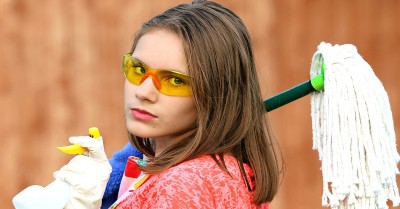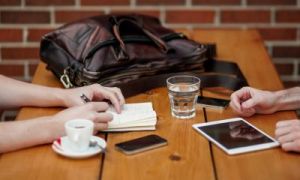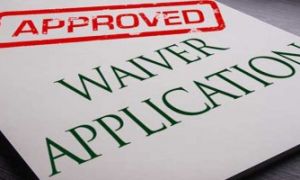Green cleaning refers to using environmentally friendly ingredients and procedures while cleaning, which are healthier and safer for us and the environment.
Health Hazards Of Using Chemical Based Cleaning Products
Toxic chemicals can do harm to the environment and the ongoing use of these makes it increasingly harder for the environment to recover.
These products can directly cause a range of mild health concerns, including headaches, dizziness, skin rashes, respiratory and eye irritation, and even asthma attacks.
Benefits Of Green Cleaning
- Healthier Environment (No longer breathing cleaners lingering in the air or sitting on furniture, reduces exposure to toxic chemicals)
- Reduce Pollution (Ozone depletion has fewer smog-producing chemicals, recyclable packaging minimizes waste, lowers environmental impact)
- More Affordable (Green cleaning is much more affordable than conventional cleaning products)
- Reduces chemical consumption and the number of cleaning products needed
- Promotes better inventory management of chemicals and equipment, resulting in more efficient and better-planned procurement of goods
DIY Green Cleaning Products
You can use common items including vinegar, baking soda, detergent, essence etc. to create your own DIY green cleaning products which can be used in and around the service.
Here are some green cleaning ideas:
- Benches - warm soapy water can remove bacteria on most surfaces. The combination of warm water and soap can get rid of most of the bacteria on any hard surfaces. You may choose from a wide selection of biodegradable detergent that is available in the market.
- Nappy Change Mats – use warm soapy water, wipe with paper towel or a single use cloth that must be then put in the wash, rinse and wipe dry with more paper towel If possible, put out in the sun to dry.
- Floors - mop with hot/warm water, marks can be removed by using a rubber. Timber floors can be cleaned with cold black tea with a mop (use a damp mop only).
- Carpet - apply shaving cream to marks and spots, wash off with warm water. Mud and dirt marks, sprinkle with salt or bi-carb soda leave to dry them vacuum.
- Sink - rub with bi-carb soda on a damp cloth
- Basin - rub with bi-carb soda on a damp cloth/vinegar on a cloth
- Windows and Mirrors - clean the windows with vinegar and crumpled newspaper or paper towel.
- Tables, Walls, Ledges and Chairs - for paint or crayons – eucalyptus oil mixed with water, add a few drops of oil on a cloth and rub on stain directly. New rubber and toothpaste can also remove crayons
- Microwave and Fridge - for cleaning internally, you may use a drop of vanilla essence in water and scrub the dirt and mildew away using a sponge. You can also use a damp cloth with bi-carb soda in cleaning its exterior. To get rid of an unwanted smell by placing a small container of bi-carb soda inside fridges and microwaves.
- Fridge Interior - use a few drops of vanilla essence in water, to new sponge helps to freshen up fridge. Place a small container of bi-carb into fridge to draw out any unwanted odours.
- Toys – hot soapy water or the dishwasher. Make sure to rinse and then leave in the sun to dry if possible
- Tea Towel/Bibs – soak in mix of 2 tablespoons of cream of tartar and 1L of water before washing
- Urine – soak white vinegar or lemon juice with water, after dry in sunshine.
- Bathrooms and Toilets – Wash surfaces with detergent and warm water. There is no need to use disinfectant unless you know that the surface has been contaminated with potentially infectious material via body substances or blood
Disinfectant is ineffective unless a surface has been cleaned first. It cannot kill germs if the surface is not clean so use detergent and dry first. Most disinfectants must also soak the surface for at least 10 minutes to be effective.
If using bleach because of a gastro/contagious outbreak, blood spill or similar then you need to apply it after you have washed and dried the surface first as above. Disinfectant is only required during reportable outbreaks.
Note: Vinegar is not a suitable disinfectant – claims suggest it does not kill enough germs in a short space of time to be an effective surface disinfectant. It can be used and diluted with water to use to freshen up surfaces.
Cleaning Tips
- Use colour coded cloths that can be washed and reused over and over – blue for bathroom, green for kitchen, purple for tables and yellow for dusting.
- Use paper towel for floor spills.
- Plain eco friendly washing detergent diluted in water in spray bottles and bleach for cleaning bathroom surfaces, kitchen and eating surfaces and nappy change mat
- Use orange or lemon essential oil diluted well in spray bottles as air freshener
- Use vinegar in the washing machine as a cleaner and also fabric softener.
- When using green cleaning ideas/recipes check for allergies and sensitivities with smells and scents from the children and their families.
- Ensure that oils and natural products are still kept out of children’s reach. Safe labelling on all cleaning items is required at all times and bottles should be labelled correctly.
Green cleaning enables you to to use environmentally friendly ingredients designed to preserve human health and environmental quality.
Note: This is to be used as a general guideline only.
References:
Benefits Of Green Cleaning, The Service Fort
Effective and Safe Green Cleaning, The Empowered Educator Online
Sustainability Practices In Childcare, Aussie Childcare Network



 As an Educator in Australia, your pay rate falls under the Children’s Services Award 2010. This award states the minimum amount that an employer can
As an Educator in Australia, your pay rate falls under the Children’s Services Award 2010. This award states the minimum amount that an employer can When working as a qualified Early Childhood Teacher (with a university degree) within a service, your rate of pay will come from the Educational Services
When working as a qualified Early Childhood Teacher (with a university degree) within a service, your rate of pay will come from the Educational Services When working as a Diploma Qualified Educator your pay rate is from the Children's Services Award 2010. This Award states your minimum rate of pay
When working as a Diploma Qualified Educator your pay rate is from the Children's Services Award 2010. This Award states your minimum rate of pay When working as a Cert 3 Qualified Educator, your pay rate is from the Children's Services Award 2010. This Award states your minimum rate of
When working as a Cert 3 Qualified Educator, your pay rate is from the Children's Services Award 2010. This Award states your minimum rate of Educational Leaders play a crucial role in their early childhood service by ensuring that the educational program aligns with best practices and supports the holistic
Educational Leaders play a crucial role in their early childhood service by ensuring that the educational program aligns with best practices and supports the holistic In early childhood education and care, ratios are more than a technicality—they are a frontline safeguard. Every child deserves responsive supervision, emotional connection, and developmental
In early childhood education and care, ratios are more than a technicality—they are a frontline safeguard. Every child deserves responsive supervision, emotional connection, and developmental Here’s a comprehensive Mobile Phone and Smart Watch Policy tailored for early childhood education and care (ECEC) services in Australia, aligned with the latest 2025
Here’s a comprehensive Mobile Phone and Smart Watch Policy tailored for early childhood education and care (ECEC) services in Australia, aligned with the latest 2025 With the new national child safety reforms kicking in on 1 September 2025, early childhood services like yours have a real opportunity to lead the
With the new national child safety reforms kicking in on 1 September 2025, early childhood services like yours have a real opportunity to lead the The Sea of Fish Challenge is a national initiative that invites children, educators, families, and communities to create and display fish artworks as a symbol
The Sea of Fish Challenge is a national initiative that invites children, educators, families, and communities to create and display fish artworks as a symbol Across the early childhood education and care sector, educators are sounding the alarm: current staffing ratios are insufficient to deliver safe, meaningful, and developmentally appropriate
Across the early childhood education and care sector, educators are sounding the alarm: current staffing ratios are insufficient to deliver safe, meaningful, and developmentally appropriate


